9 email newsletter ideas to help you build brand authenticity
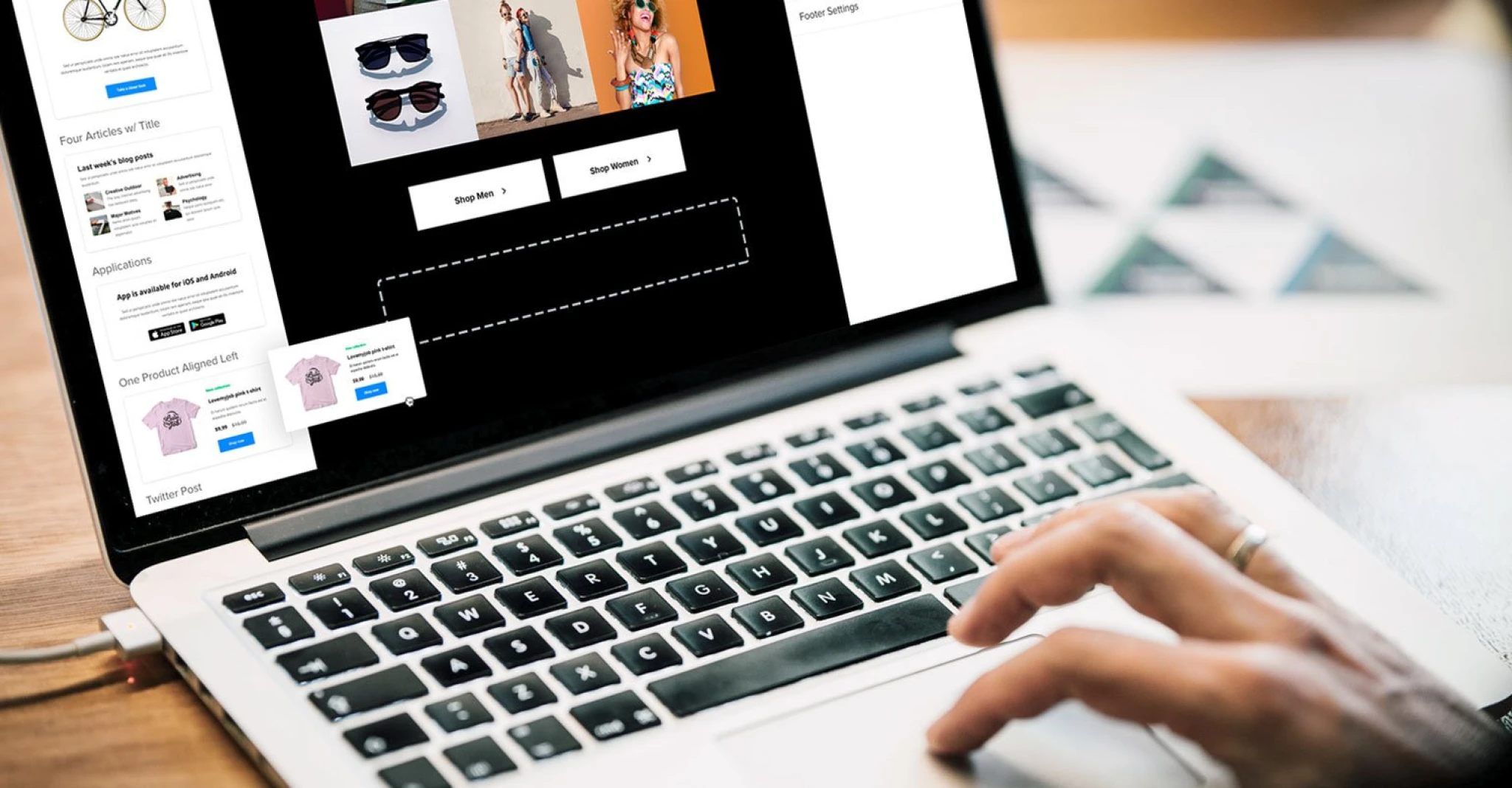
Having a good product is important, but it means nothing if there’s no one who trusts your company. In the era of sponsored posts and paid endorsements, people crave authenticity more than ever.
In fact, brand authenticity is an important factor when deciding what brands customers like, support, and choose. If a company leverages more transparency, then it is easier for people to trust them, and that drives brand loyalty.
Once customers trust your brand, they will be more likely to choose it over others. As a result, this means growing revenue.
However, building brand authenticity takes a considerable amount of time and effort. Thus, the more communication channels you use to build brand authenticity, the better. But if you are going to start with one, make it an email.
So, why should you use email marketing to build brand authenticity?
Choose the best way to connect with customers: 61% of consumers believe that email is the preferred communication channel to be contacted by brands online.
Suit customers’ preferences: use email marketing for building authenticity instead of boosting sales as around 76% of people find ads in newsletters annoying.
In this post, I’m going to share nine ideas for email newsletters that can help you build brand authenticity.
Nine email newsletter ideas to build brand authenticity
No matter your business size, it’s likely you send emails to reach your potential customers, connect with your subscribers, and promote your product or service.
However, just a few marketers consider email marketing as a way to build brand authenticity. By sharing relevant content with your subscribers, you can establish a connection and build credibility.
Here are nine email newsletter ideas to build brand authenticity.
#1. Tell the company’s story
Sharing the brand’s story is a great way to set an authentic foundation. Since brand authenticity is about honesty, it’s important to tell your customers more about your company, its history, views and values with the brand persona.
Moreover, it’s no secret that storytelling is one of the most powerful tools in communication, and many iconic brands tell brand stories to build a connection with audiences.
Let’s take Lacoste as an example. The fashion brand is proud of its history that dates back to 1930s. To celebrate its historic 85th anniversary in 2018, not only did Lacoste invite subscribers to learn about the brand story, but it also launched a new collection for fans who want to be part of this story.
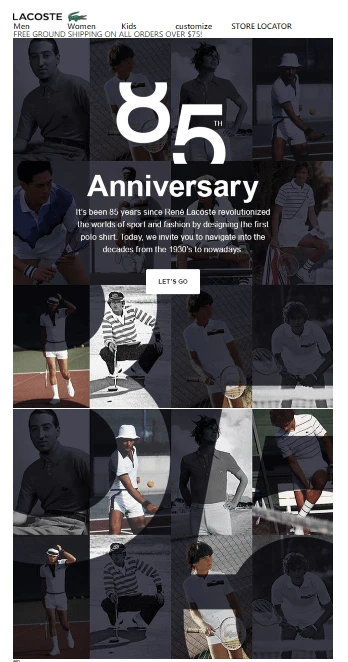
If you’re a big brand, you can use the power of the brand story to create a sense of belonging. And if you’re not a big brand, you can tell the company’s story to produce trust.
All in all, share the company’s history to tell more about your brand and become closer to your target audience.
#2. Share the company's values
Shared values matter. When customers believe they share values with the company, they are more likely to trust your brand. Thus, companies need to tell more about their values to enhance their corporate brand image and foster a deeper connection with customers.
For example, McDonald’s created Ronald McDonald House Charities (RMHC) in 1974 to improve the health and well-being of children and families around the globe. Plus, the company sends newsletters to share inspiring stories from families, and therefore promote volunteerism:

By sending these emails, the company uses the ‘show, don’t tell’ technique which makes it easier for customers to see your brand as a whole entity. No matter your business is, it’s important to ensure your brand values align with your target audience.
#3. Take users behind the scenes
When you let customers see the reality of what happens behind the scenes, it helps to build brand authenticity. Thus, many companies rely on BTS content when it comes to being transparent with customers.
There are several reasons why taking users behind the scenes (BTS) content is a great idea:
Exclusivity
Engagement
Transparency
Moreover, there are many ideas for BTS content that depend only on your creativity - from showing the work process to taking a tour around the office.
With a massive following on social media accounts, Marc Jacobs knows that the brand has many fans who crave for communication online. Instead of live streaming the runway, the company informs its fans about an exclusive opportunity to get front-row access and see what happens backstage during fashion shows:
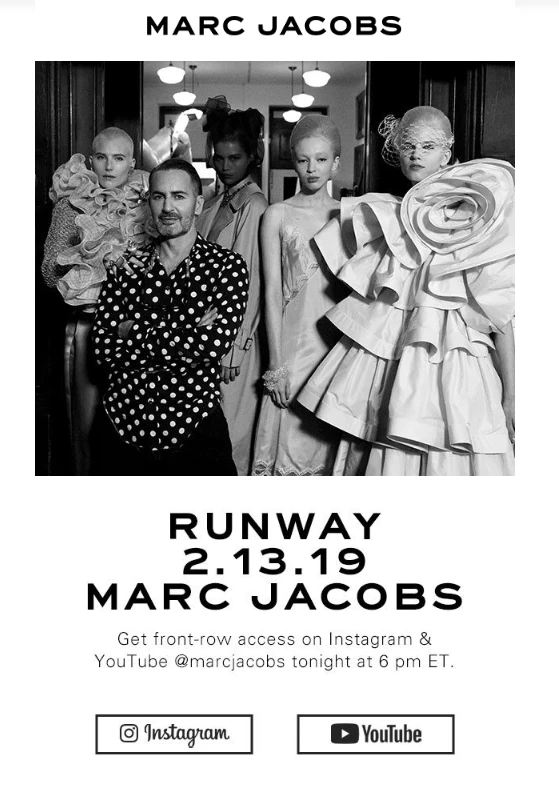
When you send emails that invite subscribers to take a look behind the curtain, you show that you’re genuine and you also make users feel valued as they know this information is unique.
#4. Explain the product development process
One of the best ways to make subscribers feel closer to your company is to provide them with a unique glimpse into development processes, such as working on the product launch, brainstorming ideas, manufacturing, etc.
In most cases, customers only see the final product. When you explain the product development process to them, you create a deeper connection and build trust (and authenticity).
Check out how Estee Lauder did it with video content:
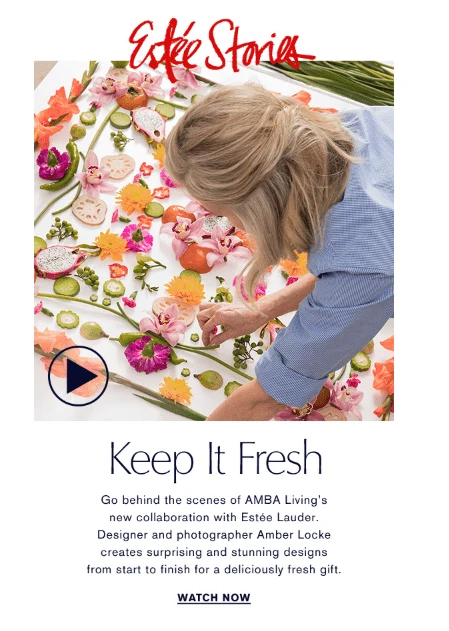
The good news: if you don’t have a budget to hire professionals, you can always use an online video editor to create a video that shows the product development process. And since you want to stay authentic, there’s no need to make your video look too polished or professional - your subscribers want to get something real.
#5. Post interviews with a team members
Every company has real humans behind the brand. To humanize your company, it’s better to showcase the community behind the company - your brand owner, team members, etc.
Since people trust other people more than brands, including your workers’ real names with quotes is a great way to show users a more human face. MadeWell serves a perfect example of how to tell more about the team members:
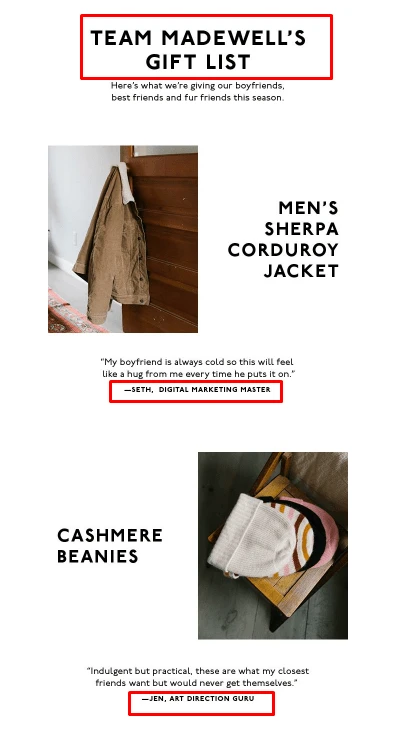
Whether you want to share an interview with the brand owner or introduce your staff, it’s a proven way to show readers that your company is transparent and made up of real people.
#6. Share user-generated content
User-generated content (UGC) is not just a buzzworthy trend. For marketers, it’s a proven way to build trust as 75% of respondents claim that it makes content more authentic. When your customers spread a word about your company online, it’s more likely they are satisfied with your product.
And if you’re like Lulus who shares user-generated content via email newsletters, you show other people that your brand is worth a try:
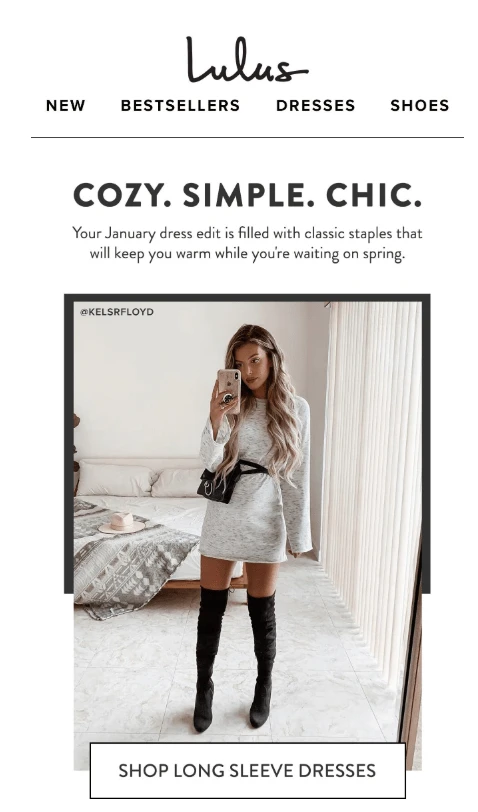
However, if your customers don’t share many photos, it’s important to encourage UGC on social media. For example, ShoeMall invites subscribers to use a branded hashtag to share their UGC photos:
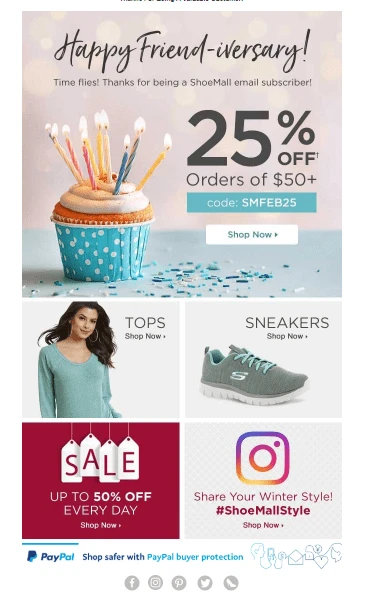
#7. Collaboration with influencers
Influencer marketing isn’t new. People crave recommendations from opinion leaders. When famous people spread a word about a company that they like and support, it’s a sign for other people that this company is trustworthy. Thus, different brands collaborate with opinion leaders to gain customers’ trust.
For example, Tommy Hilfiger invited Danny Bowien, a chef and co-founder of Mission Chinese Food, to showcase the brand’s products.
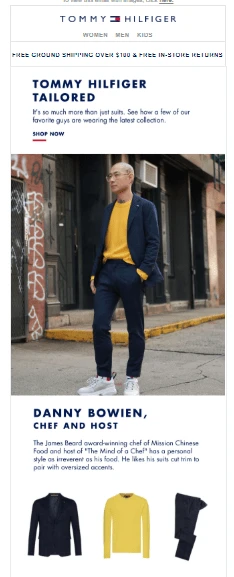
While celebrity brand endorsement can cost a lot, you can still work with micro-influencers to bring business results without spending much money. The main idea is to find an opinion leader within your niche who shares your views.
#8. Show that you know your customers
As a marketer, you may already know the importance of email personalization. If you want to stay genuine, you need to promote authenticity, and the best way to accomplish a high level of authenticity is to know your customers from A to Z.
Here’s how BeyondYoga shows they know their customer. The brand promotes the idea of ‘being your authentic self’, so they invite real people instead of models to support this vision which brings an authentic narrative to the audience:
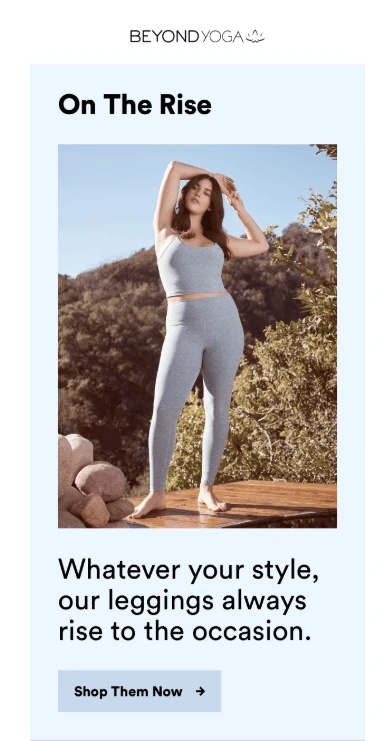
The brand also wants to suit any customer so it offers a range of sizes from XXS to 3X:
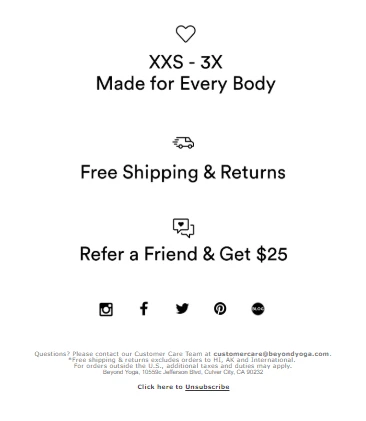
#9. Promote customer loyalty program
Who else wants to get free stuff from brands you support? It’s human nature to love gifts and bonuses, so customer loyalty programs can be a great way to increase customer retention and...trust!
If done properly, customer loyalty programs can also bring authenticity. The more customers know about your loyalty program, the better for your business success.
Thus, you’d better learn from Starbucks and promote it via email newsletters:
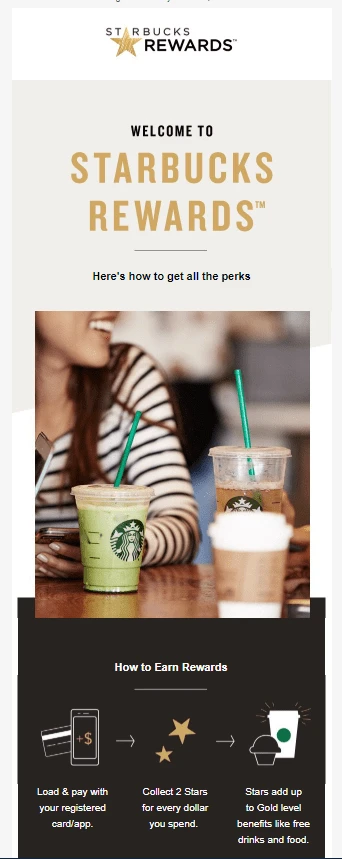
From email newsletter subscribers to loyal brand fans
Email marketing is a powerful tool for communication with your customers that can help you achieve different business goals.
Although focusing on sales seems a great idea for your business, it’s better to build brand authenticity as it will give you more loyal clients and sales over the long haul.
So, wouldn’t it be great if you could turn your subscribers into loyal brand fans? Start with one of the above-mentioned ideas and tell us how it works for you.

Hugh Beaulac is a digital marketer who has over 6 years of experience. Currently, he runs MC2 Bid4Papers, helps SBOs grow online, and writes for top-notch websites to share his tips on digital marketing. To stay tuned for more, follow Hugh on Twitter.
